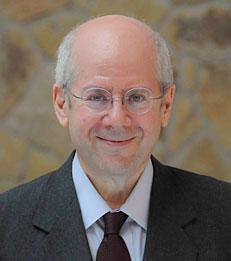Opinion
Eclipsing LIBOR
—


While there is no way to guarantee a disruption-free transition, the partial eclipse of LIBOR already is well underway. It is only a matter of time until we reach totality.
By Kim Schoenholtz and Stephen Cecchetti
“[T]he volume of unsecured wholesale lending has declined markedly… This development makes LIBOR more susceptible to manipulation, and poses the risk that it may not be possible to publish the benchmark on an ongoing basis if transactions decline further.”
Financial Stability Oversight Council (2016).
The manipulation of the London Interbank Offered Rate (LIBOR) began more than a decade ago, when employees of leading global firms began to submit false reports to the British Banking Association (BBA). At first they did this to influence the value of LIBOR-linked derivatives, but later, during the financial crisis, they did it to conceal the deterioration of their employers’ creditworthiness. US and European regulators reported many of the details in 2012 when they penalised Barclays, the first of a dozen financial firms that collectively paid fines of more than $9 billion (Commodities Futures Trading Commission 2015, New York Times 2016). As well as having to settle claims from aggrieved clients, these firms face enduring reputational damage. In some cases, management was forced out, and in others, individuals received jail terms.
You might think that after this costly scandal, and knowing challenges of maintaining LIBOR, market participants and regulators would have quickly replaced LIBOR with a sustainable short-term interest rate benchmark that had little risk of manipulation. You’d be wrong. The current administrator (ICE Benchmark Administration), which replaced the BBA in 2014, estimates that this guide (now called ICE LIBOR) continues to serve as the reference interest rate for “an estimated $350 trillion of outstanding contracts in maturities ranging from overnight to more than 30 years" (our emphasis).
Read full article as published by VoxEU.
___
Kim Schoenholtz is Professor of Management Practice in the Department of Economics and Director of the Center for Global Economy and Business.
Financial Stability Oversight Council (2016).
The manipulation of the London Interbank Offered Rate (LIBOR) began more than a decade ago, when employees of leading global firms began to submit false reports to the British Banking Association (BBA). At first they did this to influence the value of LIBOR-linked derivatives, but later, during the financial crisis, they did it to conceal the deterioration of their employers’ creditworthiness. US and European regulators reported many of the details in 2012 when they penalised Barclays, the first of a dozen financial firms that collectively paid fines of more than $9 billion (Commodities Futures Trading Commission 2015, New York Times 2016). As well as having to settle claims from aggrieved clients, these firms face enduring reputational damage. In some cases, management was forced out, and in others, individuals received jail terms.
You might think that after this costly scandal, and knowing challenges of maintaining LIBOR, market participants and regulators would have quickly replaced LIBOR with a sustainable short-term interest rate benchmark that had little risk of manipulation. You’d be wrong. The current administrator (ICE Benchmark Administration), which replaced the BBA in 2014, estimates that this guide (now called ICE LIBOR) continues to serve as the reference interest rate for “an estimated $350 trillion of outstanding contracts in maturities ranging from overnight to more than 30 years" (our emphasis).
Read full article as published by VoxEU.
___
Kim Schoenholtz is Professor of Management Practice in the Department of Economics and Director of the Center for Global Economy and Business.
